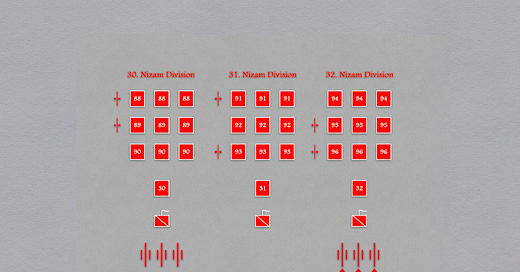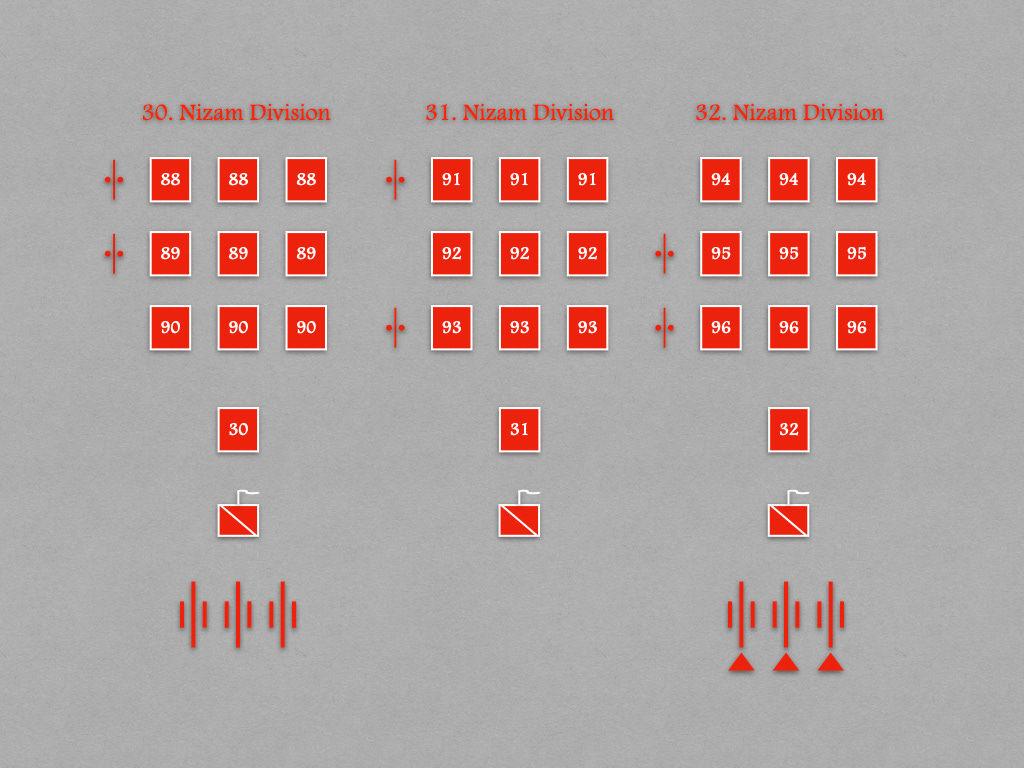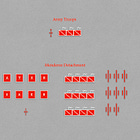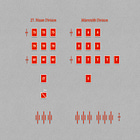During the winter of 1912/1913, Hans Rhode served in the headquarters of the Ottoman field army charged with keeping the Dardanelles closed to the warships of the Royal Hellenic Navy.1 Soon thereafter, he wrote a short history of the resulting campaign, the first in the twentieth century to take place on the Gallipoli Peninsula. This little book provides, among many other things, a complete order of battle, down to the level of infantry battalions, field artillery batteries, and cavalry squadrons, of the Ottoman divisions engaged in that struggle.
The structure of some of these divisions, particular that of the 30th, 31st and 32nd Nizam Divisions, followed the ideal pattern laid down for formations of that type. 2 Thus, each consisted of three (neatly numbered) infantry regiments (each of three battalions), two machine gun companies, a battalion of chasseurs, a squadron of men on horseback, and a battalion of field artillery. (Each of the machine gun companies belonged to one of three infantry regiments. The number of each chasseur battalion matched that of its parent division.)
Readers who share my fondness for ordnance of the horse-drawn persuasion will notice the irregular allocation of field artillery. Normally, each Nizam division received, as divisional artillery, one of the three three-battery battalions of the field artillery regiment of its parent army corps. However, while the 30th Nizam Division was able to do this, the 31st and 32nd Nizam Divisions had been deprived of their field artillery when they were task organized for amphibious operations.
In the 32nd Nizam Division, a battalion of mountain guns took the place of the missing field pieces. The 31st Nizam Division, alas, was obliged to spend the campaign without organic field artillery of any sort.
Before the outbreak of the First Balkan War, the 30th, 31st, and 32nd Nizam Divisions belonged to the X. Army Corps, a formation that was both stationed in, and recruited from, a district in central Anatolia. However, sometime before 7 February 1913, when it conducted a landing operation at Şarköy, some twenty kilometers northeast of the neck of the Gallipoli Peninsula, X. Army Corps had traded the 30th Nizam Division for a second-line formation, the Samsoun Redif Division.
Source: Source: Hans Rohde, Die Operationen an Den Dardanellen im Balkankriege 1912/13 (Berlin: R. Eisenschmidt, 1914), pages 132-136
For Further Reading:
Prior to taking service with the forces of the Sublime Porte, Hans Rohde had been an officer in one of the armies of the German Empire. In the years after the Gallipoli campaign of 1913, he published ten books, five of which dealt with issues related to that great event.
A nizam division corresponded to an “active” division of the contemporary armies of France and Germany. That is, it was composed largely of soldiers who had been serving “with the colors” at the start of the war.








